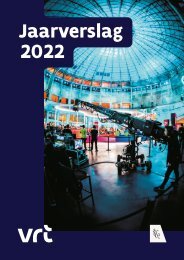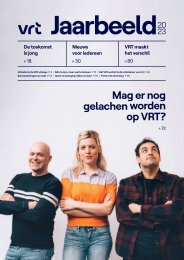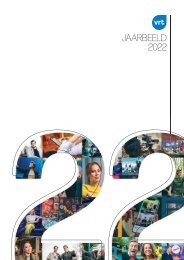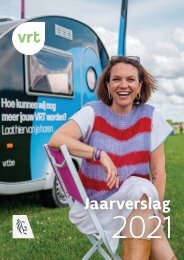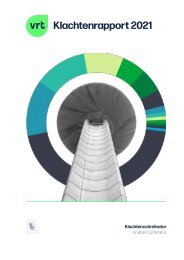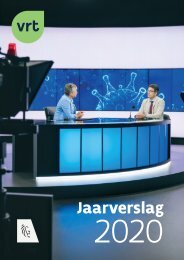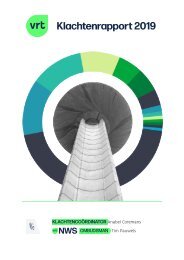Create successful ePaper yourself
Turn your PDF publications into a flip-book with our unique Google optimized e-Paper software.
De investeringen in kinderprogramma’s van Vlaamse makelij zijn wel degelijk belangrijk en niet<br />
evident in een internationaliserend medialandschap. Zo toont onderzoek aan dat commerciële,<br />
veelal internationale zenders, weinig in lokale content investeren en dat publieke omroepen<br />
in dit segment het verschil maken. 80<br />
“What the historical and contemporary evidence suggests is that certain types of<br />
children’s programmes – particularly domestically produced programmes and nonanimated<br />
content – are under-provided by commercial broadcasters.”<br />
“In the area of children’s provision, the three PSMs in our study – the BBC, RAI and PBS<br />
– appear to be making, to different degrees and in different ways, a distinctive<br />
contribution, compared to what is available on commercial channels. PBS in the US<br />
continues to be the key provider of educational children’s programming, especially preschool<br />
content, with children’s programmes accounting for a significant proportion of<br />
the total broadcast output of PBS-affiliated stations in an advertising-free environment.<br />
Now that ITV has virtually withdrawn from the origination of children’s content, the BBC<br />
has been left, by a long distance, as the main funder and broadcast outlet for UKoriginated<br />
children’s content, sustaining range and diversity in the process. For<br />
example, as noted by the BBC Trust, the schedule of pre-school channel CBeebies<br />
comprises 76 per cent non-animated content, compared with levels of animation<br />
reaching 70 per cent on rival channels. Frequently criticised for not being sufficiently<br />
distinctive, even RAI appears to be playing a valuable role as the main outlet,<br />
commissioner and funder of original children’s programming across genres, nurturing<br />
talent and supporting the domestic animation industry, in a market which is dominated<br />
by American and Japanese animation. 81<br />
Indien VRT een eigen lineair aanbod voor de subdoelgroep van baby’s, peuters en kleuters mag<br />
aanbieden, betekent dit dat er doorheen heel de dag een volwaardig alternatief met lokaal,<br />
cultuurspecifiek aanbod voor de twee internationale, Amerikaanse zenders komt. Vandaag is<br />
dat niet het geval.<br />
80<br />
D’Arma, A. & Steemers, J. (2013). Children’s Television: Markets and Regulation.<br />
Retrieved from:<br />
https://www.researchgate.net/profile/Alessandro_Darma/publication/304789482_Children's_Television_Marke<br />
ts_and_Regulation/links/5781310608ae9485a43bd6aa.pdf; Steemers, J. & D’Arma, A. (2012). Evaluating and<br />
regulating the role of public broadcasters in the children’s media ecology: the case of home-grown television<br />
content. In, International Journal of Media & Cultural Politics, vol 8(2), pp. 67-85. Retrieved from:<br />
http://web.a.ebscohost.com/ehost/pdfviewer/pdfviewer?sid=26aa5595-1026-4fea-93a3-<br />
e94a97eaeafb%40sessionmgr4008&vid=1&hid=4114<br />
81<br />
Steemers J., D’Arma A. (2015). Public Service Media and Children: Serving the Digital Citizens of the Future. In,<br />
Reinventing Public Service Communication: European Broadcasters and Beyond. Retrieved from:<br />
http://www.ssnpstudents.com/wp/wp-content/uploads/2015/01/Reinventing-public-service-communication-<br />
European-broadcasters-and-beyond.pdf#page=135<br />
46




